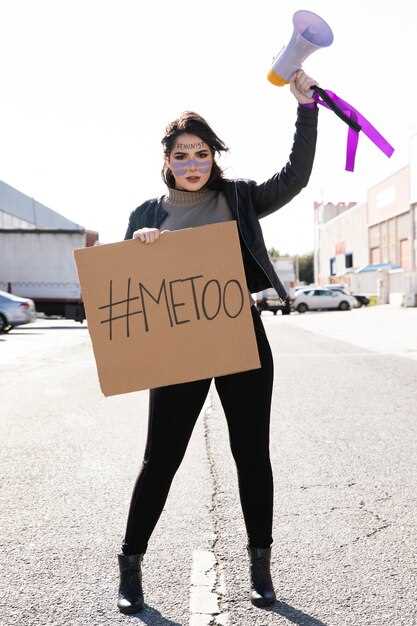Always verify factual claims with official records before sharing private exchanges.
From police reports and court filings, investigators tracked a sequence of communications surfaced in the case file. Some messages referenced elizabeth and casey in contexts that drew scrutiny from the allred’s team. The anonymous threads were traced to devices connected to a person claiming to speak for the involved figure; in some passages, the language suggested control, with references to immobilized states, standing, or being left apart, and to moving together or away, as a next step in a coercive frame, which some observers labeled as weird. The material appeared across multiple sources, with some items claimed to have originated before public attention intensified.
Across some extracts, cannibalism and rape themes appeared, prompting questions about intent and consent. Police notes and filings show that these portions were scrutinized for context and potential misinterpretation, while others labeled them sensational or out of proportion to the broader dialogue. Readers who veer toward sensationalism should pause; the credible record emphasizes distinguishing reported claims from private messages, and avoids publishing unverified transcripts. context matters remains central to any assessment.
Readers who want clarity should focus on the named elements in the case: the name casey, elizabeth, and the way the conversation moved from anonymous beginnings to serious allegations. If youve followed the coverage, you know how much context matters; the authorities tracked these threads to the person behind the account and to separate devices, with some messages left in drafts away from the main conversation. The aim is to understand what was claimed and by whom, not to amplify every fragment, or to leap to conclusions.
the allred team emphasizes verified facts in their public statements, while the case remains in flux. This overview underscores elements that have shaped the discussion–from cannibalism references to the framing of claims–without asserting certainty. If you want to engage responsibly, rely on police and court materials, cite the name of the involved person only when it is officially confirmed, and avoid sensational retellings that could mislead readers. Such effort supports a careful, evidence-based understanding of the events.
Case Breakdown: Alleged Messages and Poster Backlash
Begin with a verified log of direct messages, on-screen posts, and poster reaction. Focus filters: timestamp accuracy, sender identity, and location context. Build three clusters: direct text exchanges, public statements, and brand responses. The aim is to separate claims from corroborated facts and guide a measured response by the investigation, media teams, and safety office. Use these data points to determine follow-up steps and communications.
In three cases, the messages included coercive language with fantasy elements, featuring rape references and requests that border on control. Some texted lines used neck imagery and deep power dynamics, signaling attempts to dominate. The actor involved, along with ramsey chatter and brand signals, spurred a wide backlash across location communities and posters. Recipients feel discomfort, mark boundaries, and report pain; theyre not comfortable with the content. The sender himself appeared in content harming others; some messages tried to shift blame toward the recipient. The investigation explained how they knew about the posts and why some claims gained traction as the archive was reviewed. investigation teams emphasize whatever evidence exists must be documented clearly. The painful reality is plain: raping or coercive behavior is unacceptable and demands accountability for anybody connected to the project. Claims presented in posts should be assessed with care; fantasy context does not excuse harm. The audience wants a firm standing from studios and organizers, and the brand must respond accordingly. The cannibal meme surfaced in online forums, shaping interpretation of the messaging environment.
Recommendations for stakeholders: archive verified exchanges, publish an accountability plan, and coordinate with safety offices. For producers, implement clear boundaries, require consent checks, and remove content violating safety policies. For audiences, maintain cautious engagement and avoid sensational framing; add warning labels on posts discussing sexual violence and suspend accounts using harmful language. For media teams, craft responses that acknowledge pain, reject normalization, and preserve brand integrity while keeping the public informed. whatever the outcome, concrete steps and timelines must be published. In communications, youre safety matters equally.
| Element | Observation | Action |
| Texted items | Coercive language, explicit references, boundary crossing | Flag in review queue; document timestamps; preserve anonymity where required |
| On-screen posts | Public reaction drives brand risk; audience demands accountability | Issue cautious, factual statements; implement warning indicators |
| Location context | Context influences interpretation; some forums amplify claims | Cross-check with metadata; verify source credibility |
Identify the exact messages reportedly sent (dates, platforms, and recipients)
Direct answer: Voice-focused reporting consolidates a set of exchanges that circulated as screenshots and transcripts, reportedly texted or transmitted via Instagram DMs and private chats, with dates spanning roughly 2016–2020. Recipients were anonymized in coverage, with placeholders such as elizabeth and ramsey used to shield identity, while others appeared unnamed. The allegations describe explicit fantasies and requests that some recipients felt pressured to respond to; in several notes, references to raping and other coercive ideas were alleged, leaving the recipients scared and unsettled. In some transcripts, items read like a script rather than spontaneous dialogue, and portions circulated in a context that suggested graphic content. These pieces constitute a broader pattern that survivors and journalists have highlighted, keeping within careful, verified context.
Platforms and timing: Three channels are cited: Instagram Direct Messages, SMS text messages, and private transcripts used in podcasts and investigative reports. The timing spans years 2016–2020, with earliest items dating from 2016 and later entries through 2019–2020. The material highlights patterns such as saying things like “doing this” or “like that,” often with references to hand gestures or control. Some notes are described as graphic, and the content revolves around fantasies and explicit language. The material is part of allegations and claims, not a definitive record by itself, having been shared in voice across receipts and summaries in various outlets. Texted lines and quoted phrases show the effort to present a candid, right-now script of intent.
Context and consequences: The badge of accountability sits at the center of public discussion, with police references appearing in some accounts and limited formal charges reported in public records. The life and standing of the figure involved have been affected, with career paths paused or ended as the conversation moved through podcasts and subsequent reports. Survivors and commentators share lessons about consent, boundaries, and responsibility, urging care for those harmed in these exchanges. It is essential to keep in mind that these items are allegations and not proven facts, and that much remains contested while the public walks through the complexities of the case, including mentions of womens safety, rights to consent, and even dramatic mentions of death and blood in some descriptions. An aunt-like confidant figure and anonymized labels such as elizabeth or ramsey sometimes appear in transcripts to protect privacy, even as listeners and readers try to understand what happened and what lessons can be learned, including how to handle this kind of content in future career and media projects.
Verify leaks: techniques to assess source credibility, corroboration, and metadata
Assign credibility score to each leak, using a three-factor framework: source reliability, corroboration strength, and metadata consistency. Track origins across page histories to ensure a tracked, stable trail rather than a one-off post. Record origin from earliest post and backfill chain to reveal really long chain.
Assess source reliability by asking whether identity is disclosed, whether there is public track record, or pattern of verified statements across series of interviews or podcast episodes. See whether source has seen repeated contexts that align with claim; if a source says theyre partners or witnesses, compare with other sources and evaluate perspective; if believed, seek independent corroboration; if claimed, compare with documented information; avoid praise of the source.
Corroboration: gather at least two independent sources who corroborate core detail. Look for cross-checking details like dates, locations, participants, and their stated roles. If a claim references names or relationships, confirm with public records or published material, not rumors. Every independent check adds weight in investigation and series of reviews.
Provenance and metadata: examine metadata attached to digital leaks: timestamps, file creation, routing info, domains, and whether metadata was stripped or manipulated. Check whether hand that authored post is identifiable, or if metadata suggests staged posting. Trace how data moved from source into publication, including any from and into transfers. This helps separate much manipulated content.
Red flags and ethics: beware content with sensational tone or graphic detail when not backed by corroboration. Note feelings of bias or pressure; look out for praise or smearing motives; be wary of sources tied to identifiable agendas, including relatives such as an aunt, or unusual alliances. Presence of therapy language or odd personal framing can signal manipulation. If something feels weird, pause and seek additional sources. Another flag is mentions of allred as a go-between; verify with independent outlets.
Practical workflow: keep living log with fields for source, page, date, corroborators, and metadata notes. Tag each item as verifiable or needs more evidence. Cross-check with a second outlet before elevating to a report; document investigation path and be transparent about limits. Record how claims affect lives and accountability, really.
Ethical reporting: handling victims’ accounts and avoiding sensationalism
Recommendation: verify every account via police files, court documents, and corroborated interviews; publish only material supported by verified sources. This approach reduces sensationalism and protects survivors.
- Verify claims via police files, court documents, and corroborated interviews; avoid speculation; if uncertainty exists, pause publication and seek corroboration from editors.
- Protect survivors by anonymizing personal identifiers; redact name and any identifying details; do not publish contact information or residence; when possible obtain consent for any public mention from a survivor or lawful next of kin; avoid bullst framing.
- Provide precise chronology using dates and official records; next, indicate gaps; eventually offer context from official sources; mark uncertainties clearly and avoid presenting unverified sequences as fact.
- Language should be survivor-centered; reflect what survivors described and told investigators, including death, and their feel, without sensational adjectives; avoid fantasy or spectacle; focus on harm and accountability.
- Collaborate with partners across newsroom units; cross-check with police, legal teams, and advocacy groups; authenticity matters; share checklists and ethics notes with partners to maintain consistency; this fosters trust back among colleagues.
- Incorporate guidance from vucekovich; morrison adds that literacy about power dynamics helps structure coverage; says partners must align on ethics; incorporate these good lessons into daily practice.
- When direct quotes used, verify exact wording; attribute to speaker; use brackets for translations; indicate whether quotes are paraphrased; ensure accuracy to reduce misattribution.
- Address harm openly: discuss impact on people close to case; as reported, family members such as a great-grandson may request redactions; if relatives tried to engage, respond promptly, while keeping privacy; communicate decisions transparently; maintain trust.
- Handle message with care: if a message from a participant exists, confirm source; avoid revealing confidential content; include context that lends meaning without sensationalizing; avoid driving trust down.
- In ongoing coverage, publish a page or living ethics guide; outline standards; update as new information emerges while maintaining accountability, not entertainment; document everything for future reference.
Timeline of the Bond poster edits and the ensuing online backlash
Recommendation: Verify every poster edit before sharing; cross-check with official notes and credible sources; avoid repeating unverified claims; track sources on tumblr and other spaces before linking to partners’ accounts.
Initial wave surfaced on tumblr; a note attached elizabeth and a few captions, sparking conversation among hollywood actors about what changes signaled.
Day two, digging through images, observers noted repeats of marks and color shifts; vucekovich posted side‑by‑side comparisons that many believed were unverified and not official.
Public response shifted toward personal narratives; some argued youre not far from what public perception creates, while others argued that nothing proves intent beyond memes and comments.
By midweek, allred compiled a note summarizing what surfaced; name tied to rumors remained unverified, fueling ongoing debate about light variants versus darker reinterpretations.
Some posts veered into harsh language, with references to partners and careers that felt invasive; many believed this reflected a weird clash between fans’ wish for control and actors’ professional boundaries, sometimes turning painful.
Ultimately, attention moved beyond surface edits, highlighting how unverified material can spread quickly on tumblr; what matters now is protecting lives, avoiding harm, and avoiding digressions that dig deeper into personal history.
Brand and platform response: lessons for marketers and PR teams
start with a close, verified statement across platforms within hours; outline intent, commit to updates, then provide texts from internal teams that came well after review and reflect confirmed facts.
Location drives audience trust; tailor tone for each platform and market, while appoint regional spokespersons; align on legal oversight from counsel, which described processes, helping consistency.
Face rape allegations with plain language; avoid describing fantasies or unverified narratives; end that year-and-a-half series by citing texts and verified records; saying accuser deserves careful handling; note that accusation sometimes wasnt corroborated.
Establish a standing cross-functional team with legal, comms, and product stakeholders; implement rapid escalation; provide resources via official links; maintain open lines for responses; ensure all communications reference verified texts; avoid sensational talking points around accuser; avoid headlines that act as hammers; align with effie criteria for responsible storytelling.
Monitor close sentiment and reaction across platforms; analyze share of voice; adjust pace and tone; publish weekly recaps; gloria from crisis comms can advise; this approach makes it possible to turn feedback into action and to stop narratives from spiraling; whats next for partners is part of ongoing monitoring.
Long-term takeaway for marketers and PR teams: embed crisis governance in budgets; train executives; keep listening posts; ensure survivors and womens voices are represented; provide support channels for them; invest in third-party audits; maintain cross-platform playbook to prevent repeating harmful patterns.

 House of Hammer – The Most Shocking Messages Armie Hammer Allegedly Sent to Women">
House of Hammer – The Most Shocking Messages Armie Hammer Allegedly Sent to Women">


